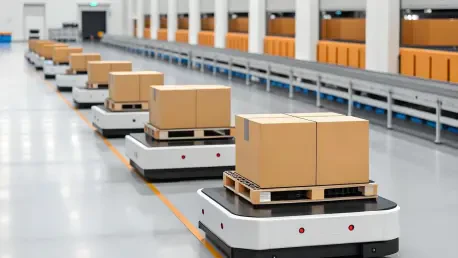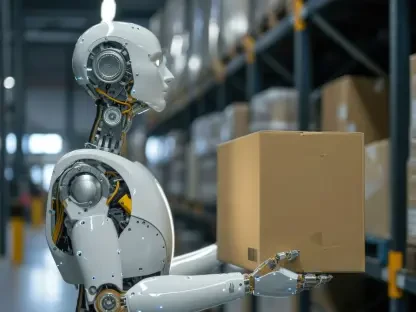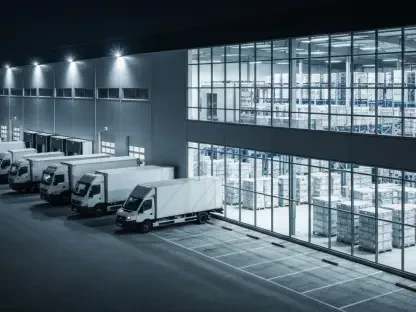Setting the Competitive Landscape
In an era where retail giants battle for efficiency and speed, Walmart emerges as a frontrunner with its ambitious automation strategy, transforming the supply chain landscape and setting new standards for operational excellence. With over 60% of its U.S. stores now receiving freight from automated distribution centers, the retailer showcases a staggering leap in operational prowess. This market analysis delves into how Walmart is leveraging cutting-edge technology to redefine logistics, focusing on current trends, data-driven insights, and future projections. The importance of this examination lies in understanding how automation not only drives cost savings but also reshapes consumer expectations in a fiercely competitive sector. By dissecting Walmart’s approach, this piece aims to uncover actionable strategies for stakeholders across the retail industry.
Analyzing Market Trends and Automation Impact
Current State: Automation Penetration in Walmart’s Operations
Walmart’s supply chain automation has reached significant milestones, with more than half of its e-commerce fulfillment volume processed through advanced systems. Data from recent quarters reveals a remarkable 30% reduction in shipping costs, highlighting the financial upside of integrating robotics and high-density storage solutions. This progress aligns with a broader industry shift toward technology-driven logistics, as retailers grapple with labor shortages and rising operational expenses. The retailer’s investment in 29 dedicated e-commerce fulfillment centers underscores a strategic focus on digital sales efficiency, setting a benchmark for competitors struggling to keep pace.
Technology as a Game-Changer: Robotics and Beyond
Diving deeper into the tools propelling Walmart’s success, innovations like autonomous forklifts and inventory-tracking sensors stand out for minimizing manual intervention. Partnerships with tech providers for high-density storage systems have enabled per-unit productivity gains, particularly in distribution hubs. However, the high upfront costs of these technologies pose a barrier to rapid scaling, requiring careful financial planning. Despite such challenges, the measurable outcomes—such as doubled productivity in next-generation fulfillment centers opened in recent years—demonstrate a clear return on investment, pushing the boundaries of what retail logistics can achieve.
Store-Centric Fulfillment: A Unique Market Edge
A distinctive trend in Walmart’s strategy is the transformation of physical stores into micro-fulfillment hubs, a move that capitalizes on proximity to customers. Recent figures indicate a nearly 50% growth in store-fulfilled delivery sales, with 35% of orders delivered in under three hours, showcasing speed as a competitive advantage. This localized approach, while innovative, faces hurdles like inventory discrepancies across diverse store locations. Nevertheless, it positions Walmart uniquely in the market by blending traditional retail spaces with modern logistics roles, offering a hybrid model that others in the sector are yet to fully replicate.
E-Commerce Dominance: Scaling Digital Efficiency
Walmart’s focus on e-commerce fulfillment centers reveals another layer of market dominance, with newer facilities boasting twice the productivity of older counterparts. This segment’s growth, fueled by automated systems, caters to escalating online demand and sets the retailer apart in a crowded digital marketplace. Expansion plans for additional centers signal an aggressive push to maintain this edge, though risks of over-reliance on tech during system downtimes loom large. Balancing these investments with operational stability remains crucial as Walmart navigates peak demand periods and consumer expectations for rapid delivery.
Projecting the Future: Automation’s Trajectory in Retail
Emerging Innovations and Market Shifts
Looking ahead, Walmart’s supply chain is poised for further transformation with emerging technologies like advanced inventory sensors and deeper robotics integration. Industry trends suggest a future where human involvement in logistics could shrink dramatically, driven by economic pressures such as labor costs. Projections indicate that from 2025 to 2027, the retailer may expand its automated facilities by another significant percentage, building on current momentum. Regulatory landscapes around tech deployment could influence this pace, requiring adaptive strategies to ensure compliance while pushing innovation boundaries.
Competitive Implications and Industry Influence
The ripple effects of Walmart’s automation surge are likely to reshape competitive dynamics across retail. Smaller players may struggle to match the scale of investment needed for similar tech adoption, potentially widening the gap between industry leaders and laggards. Forecasts point to a market where automation becomes a baseline expectation rather than a differentiator within the next few years. Walmart’s dual focus on centralized systems and store-based fulfillment could inspire hybrid models elsewhere, though competitors will need tailored approaches to address their unique operational constraints and customer bases.
Reflecting on Insights and Strategic Pathways
Reflecting on the analysis, Walmart’s automation journey over recent years marks a pivotal shift in retail supply chain management, with tangible gains in cost reduction and productivity. The integration of robotics, e-commerce hubs, and store-centric fulfillment has positioned the retailer as a trailblazer, influencing broader market trends. For stakeholders, the strategic takeaway is clear: investing in scalable automation technologies offers a path to enhanced efficiency, even if initial costs are steep. Retailers of all sizes should prioritize assessing logistics for automation-ready processes, focusing on high-impact areas like shipping and inventory accuracy. Additionally, upskilling workforces to handle advanced systems emerges as a critical step to bridge the gap between innovation and execution. As the industry moves forward, monitoring Walmart’s next moves provides a roadmap for balancing technological advancement with customer-centric outcomes, ensuring long-term competitiveness in a digital-first retail landscape.









